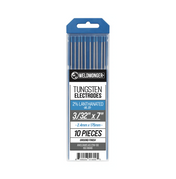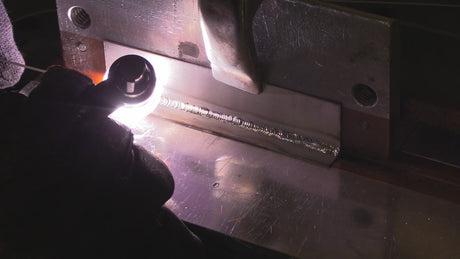Simple Metallurgy for Welding Carbon Steel
Simple Metallurgy for Welding Carbon Steels, focused on the practical concerns of weld quality and performance:
Understanding What Really Matters in the Weld Zone
For most welders, metallurgy might seem like a subject best left to engineers in lab coats. But if you weld carbon steels, you're already dealing with metallurgy—whether you realize it or not.
The key takeaway?
The main concern is making a sound weld that doesn't weaken the part or lead to failure in service. This article breaks down just the essentials every welder should understand to avoid problems like cracking, brittleness, or loss of toughness.
🔧 What Is the Main Concern When Welding Carbon Steels?
The main concern is preserving the strength, ductility, and toughness of the steel in and around the weld. Poor heat control or the wrong process can cause:
- Cracking (especially cold cracking)
- Loss of toughness in the heat-affected zone (HAZ)
- Excessive hardness, which can lead to brittle failure
- Distortion and residual stress
Even if a weld looks good on the outside, it may fail under stress if the metallurgy isn’t considered. That’s why good weld procedures matter.
Why Are Low Hydrogen Processes Specified in Welding Procedures?
Hydrogen is the enemy when welding medium to high carbon steels. If hydrogen gets trapped in the weld or HAZ, it can lead to hydrogen-induced cracking, also called cold cracking. This type of cracking may show up hours or even days after welding.
Low hydrogen processes (like SMAW with E7018 or GMAW with proper shielding gas, or GTAW) are used because:
- They limit moisture and hydrogen from entering the weld.
- They help prevent delayed cracking in hardened zones.
- They’re critical for structural or pressure vessel work where failure is not an option.
➡️ Note: Stick Electrodes like E7018 should be kept in a rod oven at 250°F or more to stay dry.
🔥 When and Why Is Preheating Needed?
Preheating is a simple tool with big benefits. It’s used when welding:
- Thick sections of carbon steel
- High carbon or alloy steels
- Steels with poor weldability (high CE or carbon equivalent)
What does preheating do?
- Slows the cooling rate to avoid rapid hardening
- Reduces the risk of hydrogen cracking
- Helps drive off moisture from the base metal
- Promotes softer microstructures in the HAZ
➡️ Example: A36 mild steel might not need preheat, but a piece of 2" thick 1045 could require 300°F or more.
What is Grain Growth?—and Why Avoid It?
Every time steel is heated to welding temperatures—especially in the HAZ—it changes at the microscopic level.
If the temperature gets too high or stays hot too long, the grains in the steel grow too large. This is called grain growth, and it leads to:
- Reduced toughness and impact strength
- More brittle failure modes
- Poor performance in dynamic or cold environments
You want fine, uniform grains for strength and ductility.
How to avoid excessive grain growth:
- Control your heat input
- Use proper preheat and interpass temperatures
- Avoid excessive amperage or long arc times
- Follow WPS (Welding Procedure Specifications) for base material
- stringers for multiple pass welds
- avoid arc strikes outside the weld
You don’t need a metallurgy degree to weld carbon steel successfully—but you do need to understand the basics of how heat affects steel. In short:
- Keep hydrogen low
- Control your heat
- Preheat when needed
- Avoid overheating the HAZ






